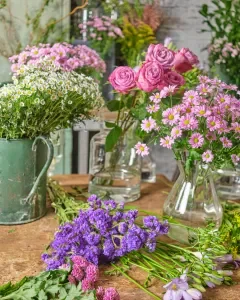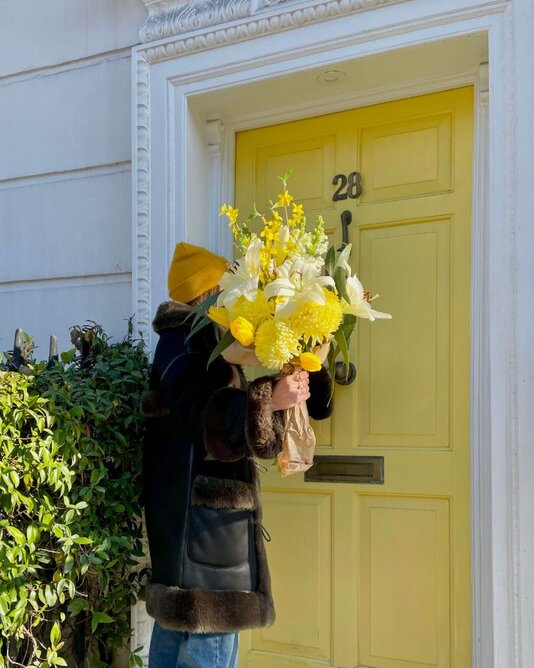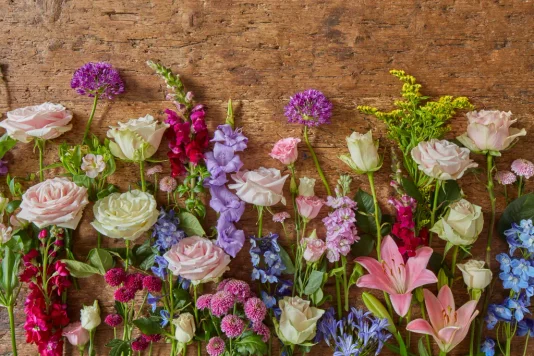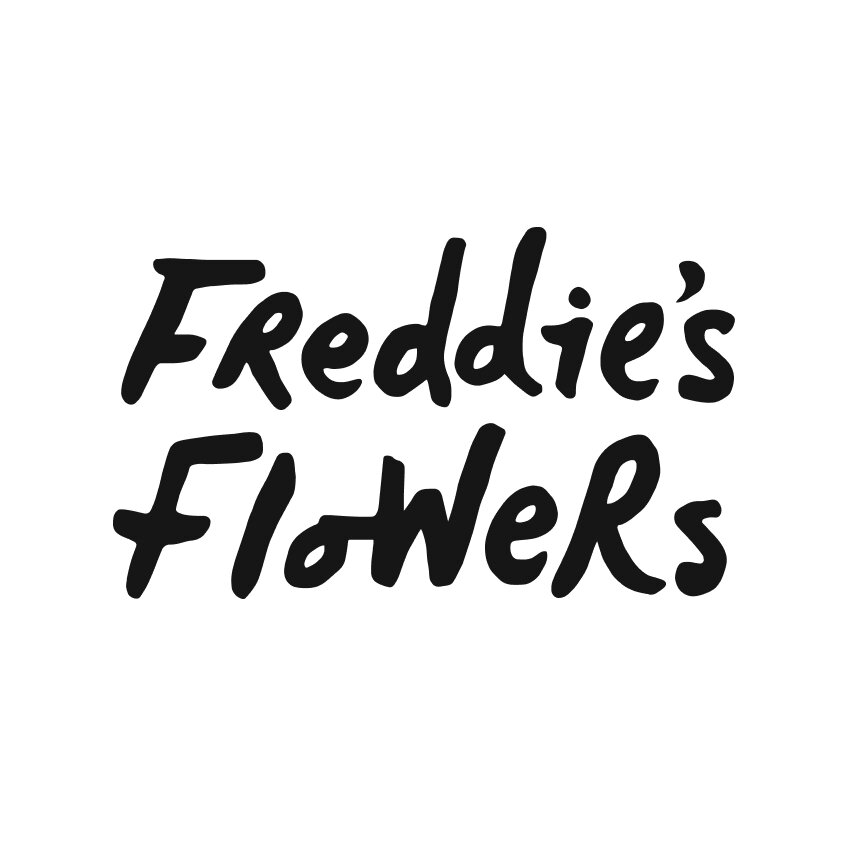
Floriography: The Lost Language of Flowers
Flowers can say so much. Clutched in shaking-nervous hands, presented with a shy smile, they can say ‘I like you’ or even ‘I love you.’ An old friend coming to your door, their silhouette complete with a bouquet shadowed at the window, can spell ‘sorry’ before you’ve even let them in. Entering a home and seeing that every single vase has been put to good use – to the extent that the water glasses are now housing clusters of daisies – can tell you that those who reside there have either received some wonderful news… or some tragic news.

We send flowers in joy, in sorrow, in love, in hope and just on those days when we think of someone, and want them to know that we care. But it’s not just the gifting of flowers that sends a message but the choice of the flower itself. Flowers have long held symbolism: mythologies, folklore, sonnets, and plays of the ancient Greeks, Romans, Egyptians, and Chinese are peppered with flower and plant symbolism William Shakespeare used flowers as clever props in his plays, the ancient Greeks had a floral mythology, mediaeval healers saw magical qualities in flowers, and Henry VII’s Tudor rose emblem cleverly symbolised a united England by combining the white and red roses of the warring York and Lancaster houses.

But it was during Victorian times that this symbolism was taken to a whole new level – and an entire language was created around flowers. Known as Floriography, or the Victorian language of flowers.
What is Floriography?
Floriography was a means to get past the strict, stuffy etiquette rules of the time Victorians began to convey what they really meant through bouquets. The flowers themselves held meaning, as did how they were gifted… and any playful, debaucherous behaviour remains hidden, spoken only through blooms. Everything from the flower itself to how you gifted it meant something. Yes and no questions could be answered simply, ‘yes’ was handing over the flowers with the right hand and no was the left… Perhaps the very first known instance of swiping left and right!
How flowers were presented and in what condition was also important in floriography. For example, if the flowers were given upside down, then the idea being conveyed was the opposite of what was traditionally meant. How the ribbon was tied said something, too: tied to the left, the flowers’ symbolism applied to the giver, whereas tied to the right, the sentiment applied to the recipient. So, imagine gifting say, a white catchfly – which symbolises betrayal. A ribbon tied to the left is admitting that you know they’ve cheated or betrayed you, but to the right… you’re admitting your own guilt. And, of course, a wilted bouquet delivered an obvious message…

Today, the floriography language has mostly been lost but we love the idea of adding an extra layer to a bouquet with additional meaning. And luckily in 1884 Kate Greenaway published the Language of Flowers with a definition for each flower. You could create little posies out of your Freddie’s Flowers box, or learn to press flowers and create gift cards with sentimental, historic value. You could even use flowers to express anger at your enemy! We wouldn’t advise it… but there really is a flower for every sentiment. Read on to find out what each stem really means in floriography…
The meaning of flowers in Floriography
Achilla – Cure for a broken heart
Alstroemeria – You are beloved
Agapanthus – Love
Amaryllis – Strength and determination
Aster – Daintiness, patience & calm
Allium – Unity and good patience, humility
Birch twig – Gentleness, elegance
Brassica – Profit
Bouvardia – Enthusiasm
Bells of Ireland – Good Luck
Broom – Neatness, humility
Calla Lily – Magnificent beauty
Red Carnations – My heart breaks
Pink Carnations –I will never forget you
Striped Carnations– I cannot be with you
White Carnations –Sweet and lovely
Yellow Carnations– Disdain
Campanula – Constancy
Carthamus – Attractiveness to others
Campunula – Gratitude
White Clematis – Mental beauty
Crocosmia – Confidence
Craspedia – Good health
Celosia – Affectation, Foppery
Chrysanthemum – Truth / You’re a wonderful friend
Pink Chrysanthemum– Cheerfulness in adversity
Red Chrysanthemum – I Love
White Chrysanthemum – Truth
Yellow Chrysanthemum – Slighted Love
Daffodil – New beginnings
Dianthus Wicky Green – Make haste
Delphinium – Levity
Eucalyptus – Protection
Eremurus – Endurance
Eupatorium – Delay
Eryngium – Independence & attraction
Forsythia – Ancipatation, Good nature
Freesia – Lasting friendship, Innocence
Germini – Cheerfulness
Gerbera – Innocence
Gladioli/Glamini – You pierce my heart
Greenbell – Stability
Hypericum – Superstition
Iris – Message / wisdom
Ilex – Foresight
Kangaroo Paw – Uniqueness
Blue & White Larkspur – Lightness, Laughter
Pink Larkspur– Fickleness
Laurel – Glory & success
Liatris – I will try again
Limonium – I miss you (same as statice)
Lily – Majesty
Orange Lily – Wealth
White Lily – Purity, sweetness
Yellow Lily – Gaiety, Walking on air
Lisianthus – Appreciation
Leucadendron – Courage
Myrtle – Love
Narcissus – Self love
Pink Nerine – Silence
Ornithogalum (Star of Bethlehem) – Purity
Peony – Happy Marriage / Prosperity / Bashfulness
Prunus (cherry) – Education
Pistache – Generosity
Phlox – Our soles are united / Agreement
Pittosporum – Not in the VLF
Pussywillow – Motherhood
Physalis – Protection, Courage
Rhododendron – Beware
Rose Burgundy – Unconscious beauty
Rose Orange – Fascination
Rose Pale peach – Modesty
Pink Rose – Grace
Purple Rose – Enchantment
Yellow Rose – Infidelity
Red Rose – Love
White Rose – Heart unacquainted with love
Rosehip – Waiting for your one true love
Ruscus – Thoughtfulness, humility
Santini – Kindness
Sedum – Tranquility
Solidago – Careful encouragement / Success
Snapdragon – Presumption
Snowberry – Innocence & Purity
Sunflower – False riches / pride
Statice – I miss you / remembrance
Stocks – Lasting beauty
Sweet william – Gallantry / Grant me one smile
Tulip - Love and Passion
Red Tulip – Declaration of love
White Tulip – I am worthy of you
Variegated Tulip – Beautiful eyes
Yellow Tulip – There’s sunshine in your smile
Tanacetum – I declare war against you
Trachelium – Unnoticed or neglected beauty
Viburnum – Bound
Waxflower – Susceptibility
Wheat – Prosperity
Up next...
Your ultimate guide to peony care
Peony season has well and truly arrived and already we don't want it to end. Make the most of your peonies with these easy care tips.
From fresh bud to long-lasting bloom
Our flowers are the freshest around, arriving in bud and opening to their full beauty at your home. Find out how you can make the most of your arrangement to enjoy it for up to two weeks or longer.
